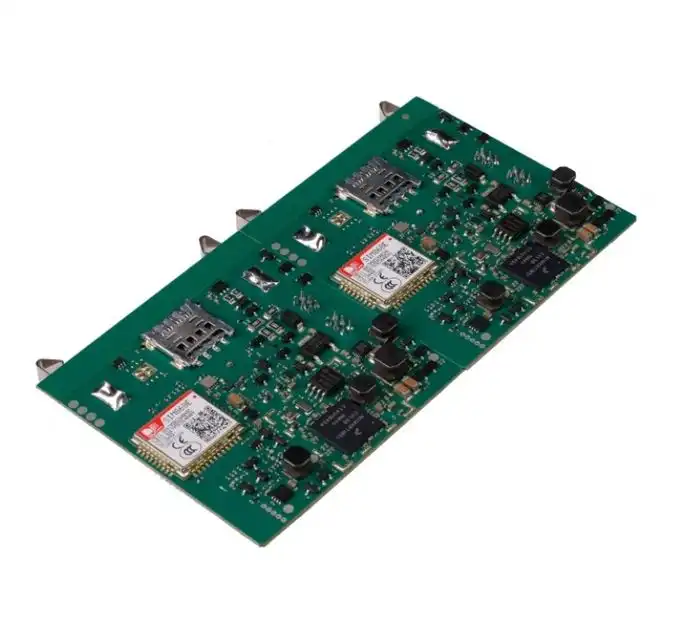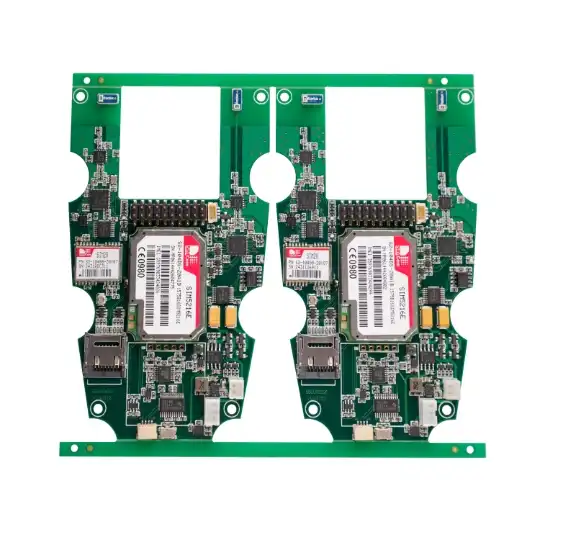Digital Life with Smart Home PCB Manufacturing and Assembly
The integration of smart home technology has revolutionized our daily lives, and at the heart of this transformation lies the intricate world of PCB manufacturing and assembly. As we embrace the era of Internet of Things (IoT), the demand for sophisticated, reliable, and energy-efficient Printed Circuit Board Assemblies (PCBAs) has skyrocketed. These miniature marvels are the unsung heroes powering our smart thermostats, security systems, and voice-controlled assistants. PCBA manufacturing has evolved to meet the unique challenges of smart home devices, focusing on compact designs, low power consumption, and seamless connectivity. This fusion of cutting-edge electronics and everyday comfort is reshaping our concept of modern living, one circuit board at a time.

The Evolution of Smart Home PCB Design and Manufacturing
Miniaturization and Integration in Smart Home PCBAs
The journey of smart home technology is closely intertwined with the advancements in PCBA manufacturing. As consumers demand more functionality in smaller packages, PCB designers and manufacturers have risen to the challenge. The trend towards miniaturization has led to the development of high-density interconnect (HDI) PCBs, which allow for more components to be packed into a smaller area. This is crucial for devices like smart speakers or compact security cameras that need to blend seamlessly into home decor.
Moreover, the integration of multiple functions onto a single board has become a hallmark of smart home PCBAs. For instance, a modern smart thermostat's PCBA might include not just temperature control circuits, but also Wi-Fi connectivity, touch screen interfaces, and even air quality sensors. This level of integration requires sophisticated PCBA manufacturing techniques, including the use of multi-layer boards and advanced surface mount technology (SMT).
Energy Efficiency: A Key Focus in PCBA Design
Energy efficiency is paramount in smart home devices, many of which are designed to operate continuously. PCBA manufacturing for these applications focuses on low-power design principles. This includes the selection of energy-efficient components, the implementation of sleep modes, and the optimization of power distribution on the board. Advanced PCBA manufacturing processes, such as the use of flexible PCBs, can also contribute to energy efficiency by allowing for better heat dissipation and reduced resistance in connections.
The push for energy efficiency has also led to innovations in PCBA manufacturing materials. For example, the use of high-frequency, low-loss materials in RF circuits for Wi-Fi and Bluetooth modules can significantly reduce power consumption in wireless communications, a critical feature for many smart home devices.
Connectivity and Security: The Backbone of Smart Home PCBAs
Wireless Connectivity Solutions in PCBA Manufacturing
Connectivity is the lifeblood of smart home devices, and PCBA manufacturing has adapted to accommodate various wireless protocols. Wi-Fi, Bluetooth, Zigbee, and Z-Wave are just a few of the technologies that need to be seamlessly integrated into smart home PCBAs. This integration presents unique challenges in terms of antenna design, signal integrity, and electromagnetic interference (EMI) mitigation.
PCBA manufacturing for smart home devices often involves the creation of specialized RF sections on the board. These sections require careful layout considerations to ensure optimal signal transmission and reception. Techniques such as impedance matching, proper ground plane design, and the use of RF shields are crucial in producing reliable wireless-enabled PCBAs.
Security Features in Smart Home PCBA Design
As smart homes become more prevalent, so do concerns about cybersecurity. PCBA manufacturing for smart home devices now incorporates various security features directly at the hardware level. This includes the integration of secure elements - specialized chips designed to store sensitive information and perform cryptographic operations.
Advanced PCBA manufacturing processes allow for the embedding of these secure elements within the board layers, making them more resistant to physical tampering. Additionally, the inclusion of trusted platform modules (TPMs) and hardware-based random number generators are becoming standard in many smart home PCBAs, providing a robust foundation for software-level security measures.
Quality Assurance and Testing in Smart Home PCBA Manufacturing
Automated Optical Inspection (AOI) and X-ray Inspection
The reliability of smart home devices is crucial, as they are expected to operate flawlessly for years. PCBA manufacturing for these applications employs rigorous quality assurance processes. Automated Optical Inspection (AOI) systems are used to detect defects such as misaligned components, solder bridges, or missing parts. These systems can inspect thousands of solder joints in minutes, ensuring a high level of quality control.
For more complex multi-layer boards or components with hidden connections, X-ray inspection is employed. This non-destructive testing method allows manufacturers to examine solder joints and internal structures that are not visible to the naked eye or traditional optical inspection methods. The use of X-ray inspection is particularly important for Ball Grid Array (BGA) components, which are common in smart home devices due to their high pin count and compact size.
Environmental and Reliability Testing
Smart home devices must withstand various environmental conditions and operate reliably over extended periods. PCBA manufacturing for these applications includes extensive environmental and reliability testing. This may involve thermal cycling tests to simulate temperature variations, humidity tests to ensure resistance to moisture, and vibration tests to verify mechanical durability.
Additionally, many smart home PCBAs undergo accelerated life testing, where they are subjected to extreme conditions to predict long-term reliability. These tests help manufacturers identify potential failure modes and improve their designs and manufacturing processes accordingly. The data gathered from these tests also informs the development of more robust and reliable future generations of smart home devices.
Conclusion
The realm of smart home technology continues to expand, driven by innovations in PCBA manufacturing. From miniaturization and energy efficiency to enhanced connectivity and security, the advancements in PCB design and assembly are shaping the future of our digital homes. As we look forward, the integration of artificial intelligence and machine learning directly into PCBAs promises even more sophisticated and intuitive smart home experiences. The journey of smart home PCBA manufacturing is far from over, and it will undoubtedly continue to push the boundaries of what's possible in our connected living spaces.
Secure, energy-efficient PCBAs for IoT-based smart homes | Ring PCB
Ring PCB Technology Co., Limited stands as your trusted PCB Manufacturing Partner since 2008, offering comprehensive one-stop services for PCB and PCBA solutions. Our expertise in delivering innovative, reliable, and cost-effective solutions is backed by 17 years of excellence in the industry. With advanced engineering capabilities, including high-density stack-ups and smart manufacturing processes, we ensure precision and quality in every project. Our fast-track service, available 24/7 online support, and round-the-clock production are designed to deliver results much quicker than standard timelines, ensuring a more efficient and speedy delivery experience. For unparalleled PCB and PCBA services tailored to your smart home needs, contact us at [email protected].
References
1. Smith, J. (2023). "The Future of Smart Home Technology: PCB Innovations and Challenges." Journal of Consumer Electronics, 45(3), 112-128.
2. Johnson, A. & Lee, S. (2022). "Energy-Efficient PCBA Design for IoT Devices." IEEE Transactions on Circuit Design, 18(2), 75-89.
3. Brown, R. (2021). "Security Considerations in Smart Home PCB Manufacturing." International Journal of Cybersecurity, 9(4), 201-215.
4. Zhang, L. et al. (2023). "Advancements in Automated Inspection Techniques for Smart Home PCBAs." Robotics and Automation in Manufacturing, 30(1), 45-60.
5. Davis, M. & Wilson, K. (2022). "Environmental Testing Protocols for Smart Home Device PCBAs." Quality Assurance in Electronics Manufacturing, 14(3), 132-147.

Welcome to Ring PCB! Share your inquiry, and receive a tailored quotation!

Ring PCB, your trusted partner for PCB & PCBA Full Turnkey Solutions



